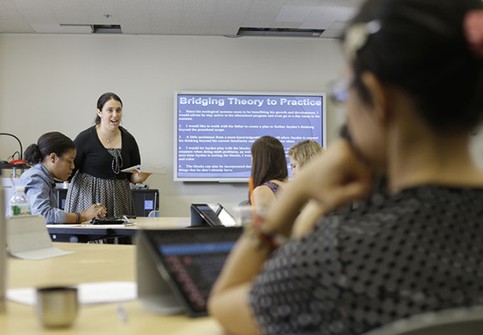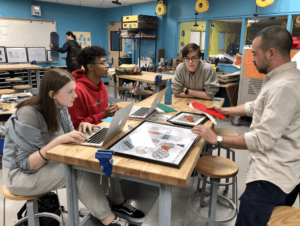Another MDRC Study Confirms Wisdom of New Small High Schools

This blog first ran on realcleareducation.com.
For a decade, MDRC has tracked the New York City Department of Education’s new school development. Last week they released another brief confirming what we knew a decade ago — small high schools, “Have markedly increased graduation rates for disadvantaged students of color, many of whom start high school below grade level.”
The research adds evidence from a fourth cohort on high school graduation and postsecondary enrollment. MDRC found that new schools, “Substantially increase students’ enrollment and persistence in postsecondary education — a finding that holds true for students of a wide range of abilities entering colleges across the spectrum of selectivity.”
So that all sounds pretty good, but it’s only half the story because MDRC compared the new schools to other schools in the city and not the schools that were closed and replaced. New schools often had double the graduation rate of closed schools.
Design thinking. I’ve been studying the challenge of urban high school education for two decades and have been associated with 1,200 new high schools and 800 improvement projects. My top line conclusion is that we know more about the former than the latter.
There is only one thing different about a big bad urban high school and a good school that serves all students well — everything. The mission, instruction, culture, connections, structure, schedule, and staffing are all different. Changing all of these factors over a short time is very difficult. There were a few success stories in the last decade — Cincinnati, Kansas City, Kansas, and others — and some progress with federal School Improvement Grants but it’s fair to say there is not a reliable and repeatable approach to transformation. That leaves the blunt but effective approach that the New York City Department of Education used — closing the lowest performing schools and opening new schools.
Every network serious about school quality shares a set of design principles that over decades and thousands of schools has proven successful at propelling low-income students to college — here are just a few great networks: Aspire, Asia, Achievement First, Alliance, Big Picture, DSST, Edvisions, Envision, Expeditionary Learning, Greed Dot, High Tech High, IDEA, KIPP, NAF,New Tech, Strive , Success, Summit, Uncommon, Uplift, Urban Assembly, and YES.
Charter and district, these schools hold high expectations, hire and support great teachers, build a performance culture, value relationships, engage all students in a rigorous curriculum designed to prepare them for college and careers… and they are small, most about 100 students per grade (See profiles of 20 great schools in Deeper Learning for Every Student Every Day).
Quality school networks believe, quoting Dennis Littky and Elliott Washer from Big Picture, the success formula includes “relationships, relevance and rigor.” Size isn’t a mission critical factor like good teaching, it’s just what has worked for decades to facilitate a strong culture and powerful relationships—it’s not a guarantee of success, just a precondition.
Folks who say small schools didn’t work seem to ignore thousands of new schools developed over the last 15 years — they are a big part of why the graduation rate improved from 66 to 80 percent. Big schools have selective sports and academic options for well supported students, but if you care about outcomes for low-income young people, big schools are the fad that failed.
Opportunity. The potential of using new tools to create new schools improves every month. As NGLC grantmaker Andy Calkins explains, next generation learning is blended, personalized, and competency-based. Most NGLC grantees are new school developers but a few include districts taking another run at high school transformation.
I’ve thought for 20 years that it may be possible to effectively combine a variety of personalization strategies in a big facility. The toolset is improving fast enough that it may soon be possible but one gap is guidance and monitoring systems to support effective advisory structures. In a recent paper (Core & More: Guiding and Personalizing College & Career Readiness) we outlined the 10 features that support college and career guidance—and nothing on the market fits the bill.
My new book, Smart Cities, describes next gen learning in more detail and outlines the elements of a portfolio strategy that includes new school development, differentiated supports, and closure in the case of chronic failure. As the MDRC brief indicates, many of these strategies were proven in NYC in the last decade. The development of new tools is rapidly improving our ability to personalize learning and improve existing schools. In the meantime, people that prioritize student outcomes continue to open great small schools.
For more on new schools, see:







0 Comments
Leave a Comment
Your email address will not be published. All fields are required.